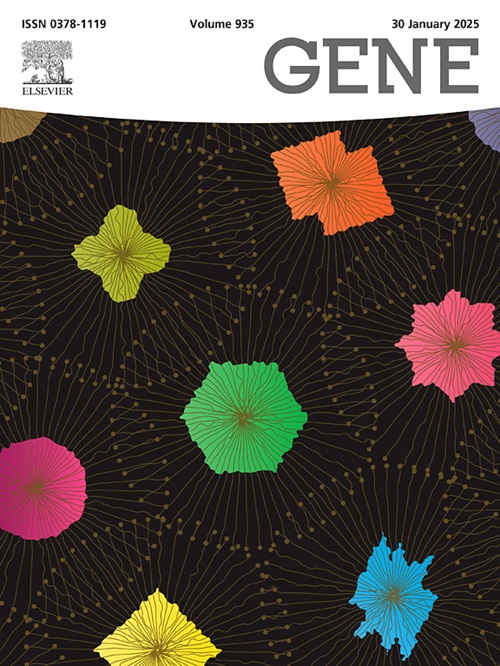克氏原螯虾(Procambarus clarkii)腹肌含量数量性状位点的鉴定及其在分子育种中的应用
IF 2.6
3区 生物学
Q2 GENETICS & HEREDITY
引用次数: 0
摘要
红色沼泽小龙虾(克氏原螯虾)是消费者的珍贵水产品,腹部肌肉含量是一个重要的经济特征。因此,迫切需要利用小龙虾腹肌含量的遗传基础进行育种。本研究利用2020 - 2023年在水池、池塘和稻田中饲养的10个不同种群(Pop1-Pop10),采用全同胞家庭和自然种群的单次和多次培养模型,进行了数量性状位点(QTL)定位。通过群体重复共鉴定出22个与腹肌含量相关的qtl,解释了2.7% ~ 21.3%的表型变异,其中6个为杂种优势位点。此外,22个qtl中有9个在8个自然群体(Pop3-Pop10)中具有一致的基因型和表型效应。其中,腹肌含量最高10%组(高组)和螯合体质量/体重(CHW/BW) QTL产生表型效应的基因型比例显著高于腹肌含量最低10%组(低组)(P <;0.01)。这些结果表明,重复鉴定的qtl,特别是9个qtl是可靠的腹肌含量候选位点,这对红沼泽小龙虾腹肌含量的遗传分析和分子标记辅助育种具有重要意义。本文章由计算机程序翻译,如有差异,请以英文原文为准。
Identification of quantitative trait loci for abdominal muscle content in red swamp crayfish (Procambarus clarkii) and potential application in molecular breeding
Red swamp crayfish (Procambarus clarkii) is a prized aquatic product among consumers, abdominal muscle content being a crucial economic trait. Therefore, there is an urgent need to exploit the genetic basis of crayfish abdominal muscle content for breeding. In the present study, Quantitative Trait Locus (QTL) mapping was performed using 10 different populations (Pop1–Pop10), raised in water tanks, ponds, and rice-crayfish fields, using single- and multiple-culture models of full-sib families and natural populations, from 2020 to 2023. In total, 22 QTLs for abdominal muscle content were identified with population repetitions, explaining the phenotypic variation in the range of 2.7 %–21.3 %, six of which were heterosis sites. Additionally, nine of the 22 QTLs had the consistent genotype with phenotypic effect in eight natural populations (Pop3–Pop10), where the proportion of genotypes with phenotypic effect of the QTL for abdominal muscle weight / body weight (MW/BW) and chelae weight / body weight (CHW/BW) in the group including the top 10 % of the yield of abdominal muscle content individuals (High group) was significantly higher than that in the group including the bottom 10 % of the yield of abdominal muscle content individuals (Low group), respectively (P < 0.01). These results suggest that the QTLs identified repeatedly, especially the nine QTLs, are reliable candidate loci for abdominal muscle content, which is immensely important for the genetic analysis of abdominal muscle content in red swamp crayfish and molecular marker-assisted breeding.
求助全文
通过发布文献求助,成功后即可免费获取论文全文。
去求助
来源期刊

Gene
生物-遗传学
CiteScore
6.10
自引率
2.90%
发文量
718
审稿时长
42 days
期刊介绍:
Gene publishes papers that focus on the regulation, expression, function and evolution of genes in all biological contexts, including all prokaryotic and eukaryotic organisms, as well as viruses.
 求助内容:
求助内容: 应助结果提醒方式:
应助结果提醒方式:


